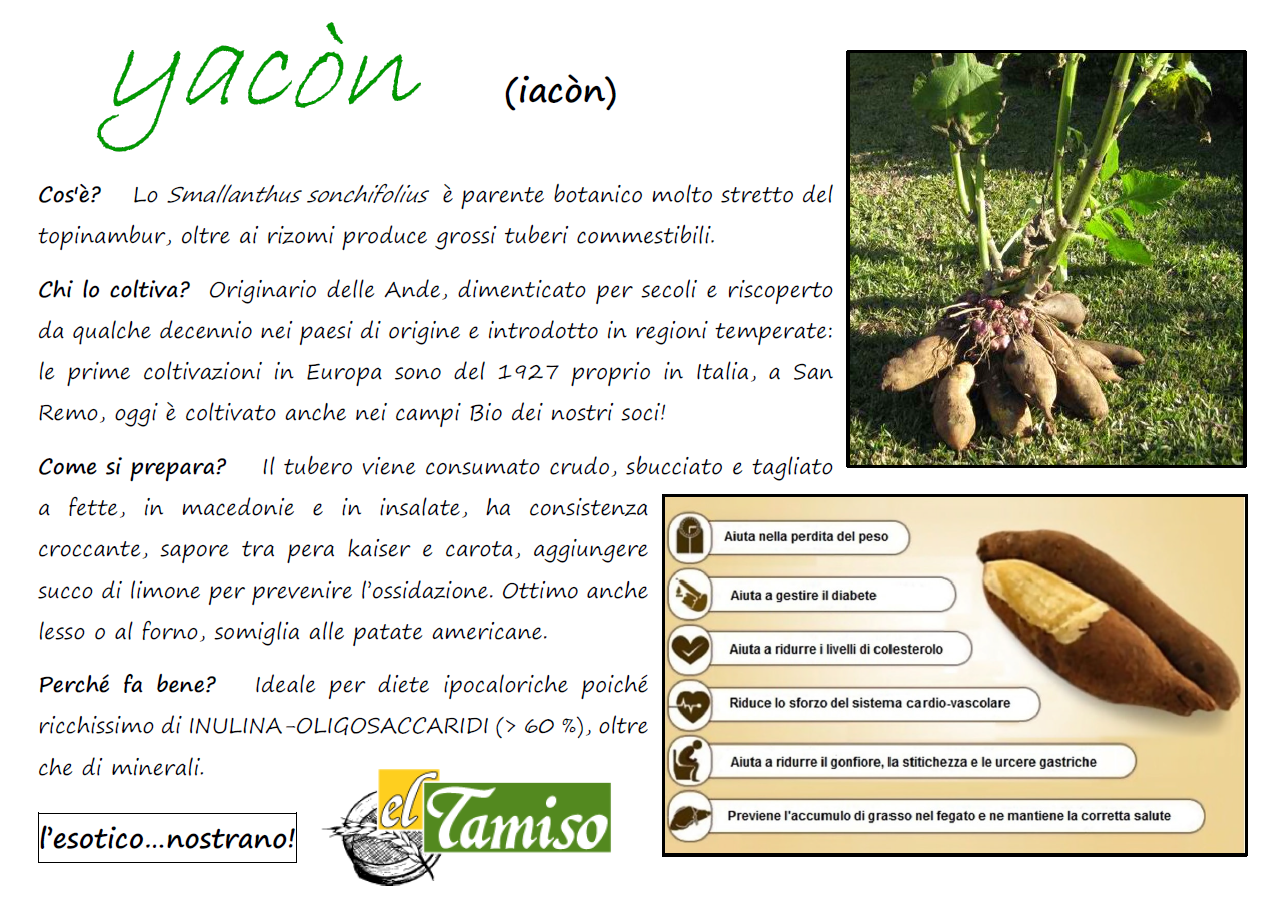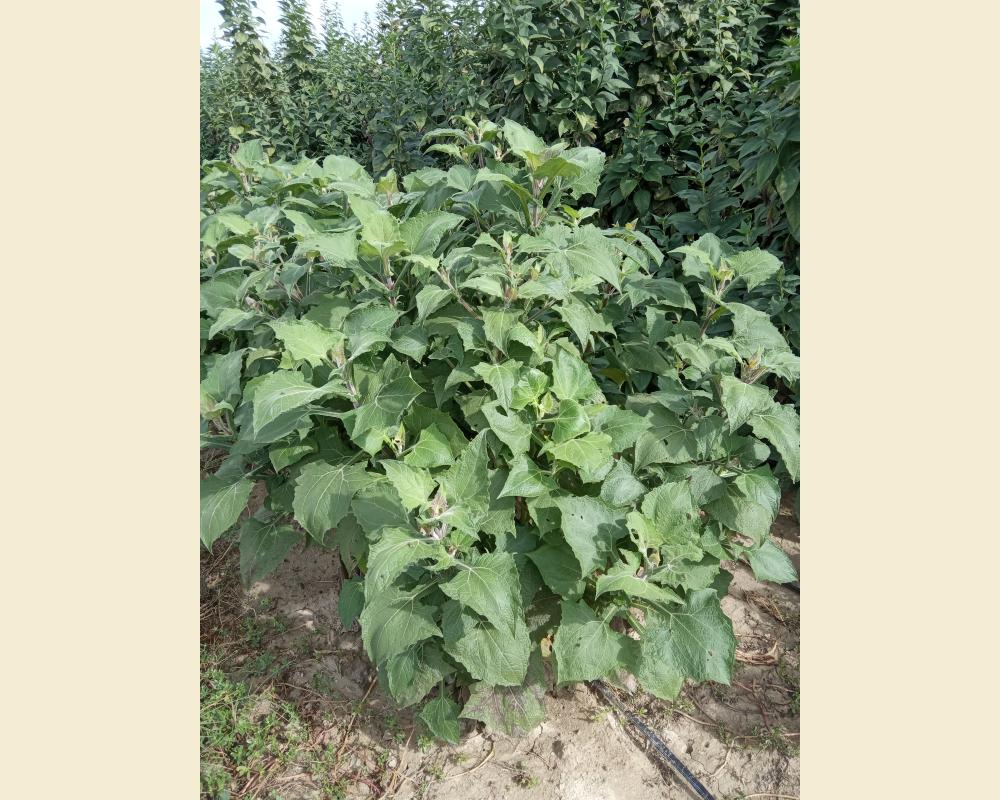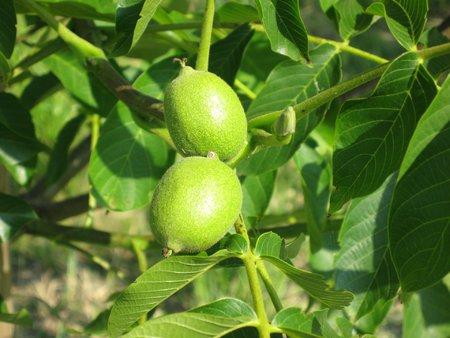The fields of our members are populated with “special” vegetables, it is the turn of the Yacon, a dietary tuber related to Jerusalem artichoke, let's find out what it is!
Yacòn (Smallanthus sonchifolius) belongs to the Composite family, or Asteraceae, in fact it is very similar to Jerusalem artichoke in terms of bearing, flowering and development of typical rhizomes, and is native to the Andes mountain range. It is a very rustic perennial vegetable that is cultivated as an annual from sea level up to 3300 m above sea level, in tropical and temperate areas from Venezuela to Argentina, and now all over the world. The edible part is the tuber with a delicate flavor, between carrot and Kaiser pear, in fact the French call it an “earthen pear”. It is considered nutraceutical because it is rich in minerals and oligosaccharide-inulin, while being sweet and satiating, it reduces blood sugar and improves intestinal functions.
The introduction to Europe is subsequent to that of the other foods introduced from the Americas and the best documented one took place in Italy in 1927 by the Sanremo botanist Mario Calvino (father of the writer Italo and who lived in Latin America for a long time). Calvin immediately understood and described its potential, especially for efficient reproduction by rhizomes and as a raw material for the production of “sugar”, so the yacon spread rapidly to countries of Central Europe and the Mediterranean. It is now fully acclimated and is frequently found in our territories, in biodiverse gardens and in
innovative organic productions.
Cultivation: prefers sandy loam soils, drained and rich in organic matter, with sunny exposure, heat and good irrigation, while the cold helps the final phase of tuber maturation and the development of the inulin content, as is the case with radicchi.
In the kitchen: the tuber is usually eaten raw, peeled like a fruit, or in salads and fruit salads. It is also an excellent ingredient for extracts and compotes. Boiled, it looks a lot like an American potato. It also lends itself to various industrial transformations such as squeezing-reduction or dehydration-milling
for the production of dietary sweeteners and super-ingredients.






